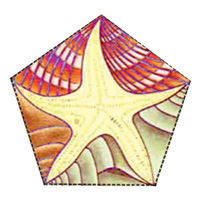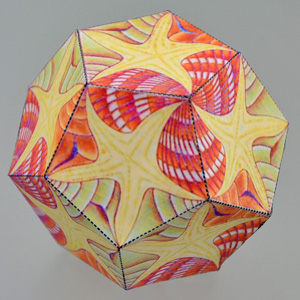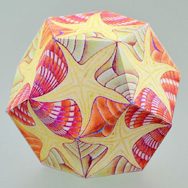

Develop spatial imagination
0.00 $
0 item(s)
Escher mosaic polyhedra
With the same pattern repeating on each polyhedrons face, it is possible to create an alternating combination of patterns on a three-dimensional geometric solid.
One of the first who plunged into the study of symmetry properties and its application in art was the Dutch graphic artist Maurits Cornelis Escher.
Escher is known for his conceptual lithographs, wood, and metal engravings, in which he masterfully illustrated the concepts of symmetry, infinity, and psychological perception of complex three-dimensional objects.
Ideas for his paintings Escher took from the exact sciences, from mathematics and geometry.
In 1936, he became interested in mosaics and regularly used it to fill the pictures plane.



The photos show the assembly sequence of the dodecahedron (step by step instructions on how to glue a paper polyhedron):
First, glue the two parts into a single net.





In Maurits Escher, there are followers who, like him, come up with original drawings. For us, the most interesting are those that allow the use of bulk geometric shapes.
For example, on the website of the Canadian University (SFU), drawings and sweeps were proposed to create five regular polyhedra. The images of animals and clowns are used as a repeating mosaic pattern:

Popular
If you don't like math, then on Halloween, evil forces will come for you! Create two guards who...
It is not often possible to encounter polyhedra outside of math textbooks. Even though such...
The Great Archimedes is ready to help us. And it's great! According to legends, Archimedes created...
The perfection of the spherical shape has long attracted thinkers and scientists who, using...
This group of five geometric solids was given the name of the ancient Greek scientist Plato....
What happens if a flat geometric shape, such as a rectangle, begins to rotate rapidly relative to...








